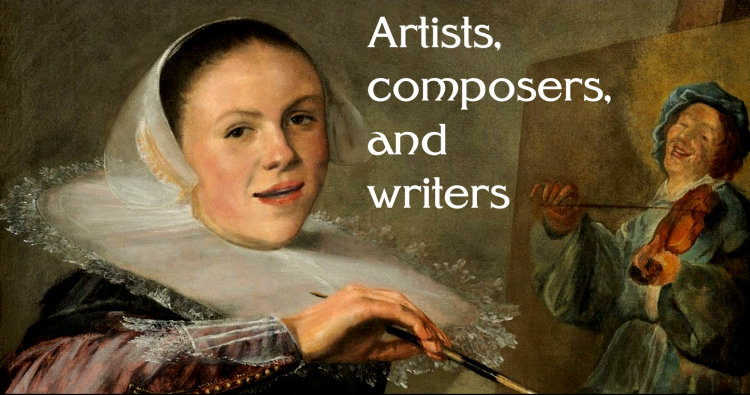Here are brief bios of the artists and poets considered in the class, listed in chronological order of birth.
You can access all biographies via the BIOS link on the syllabus page.
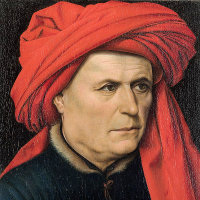 |
Robert Campin, 1375–1444. Netherlandish painter.
Campin has gradually emerged from scholarly shadows as the probable painter of a handful of works previously attributed to a conjectural "Master of Flémalle." In spite of the still-uncertain identification of many works associated with him, there is no doubt of his status as a key figure in the transition of Northern art from Gothic traditions to modernity.
|
 |
Guido di Piero (Fra Angelico), 1395–1455. Florentine painter.
He is first recorded as a painter in 1417, and by 1423 had joined the Dominican Order in Fiesole, where he remained all his life, becoming prior in 1450. Although not an innovator like Masaccio, he is noted for the purity of his style, which set the tone for Florentine art of the mid-quattrocento (1400s). He took the name Fra Giovanni, but it is as Fra Angelico (Angelic Brother), and later Beato Angelico, that he is recorded.
|
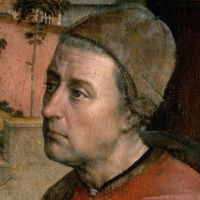 |
Rogier van der Weyden, 1399–1464. Netherlandish painter.
Very little is known of Rogier's life, except that he was highly successful in his time, with his works exported to Italy and Spain, and commissioned by princes both in the Netherlands and abroad. His extraordinary detail and emotionally intense compositions now place him firmly with Jan van Eyck and Robert Campin in the trinity of early Netherlandish masters.
|
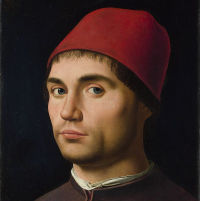 |
Antonello da Messina, 1430–79. Sicilian painter.
He probably learned the secrets of Netherlandish oil-painting technique because of contacts between the Netherlands and Naples. And in his visit to Venice in 1475–76, he would have passed these on to local artists, explaining some the qualities of light and color that distinguished Venetian art .
|
 |
Hieronymus Bosch, 1450–1516. Netherlandish painter.
His real name was Jerome van Aken, but he signed his paintings with the shortened name of his town, 's Hertogenbosch. Famous for his imagination in illustrating religious themes based on images from folklore and the medieval bestiary.
|
 |
Albrecht Dürer, 1471–1528. German printmaker and painter.
The greatest German draughtsman of the Renaissance and a formidable intellect, he produced an astonishing series of woodcuts and engravings throughout his career, as well as a number of devotional paintings and portraits, plus numerous sketches and watercolors that testify to his extraordinary powers of observation.
|
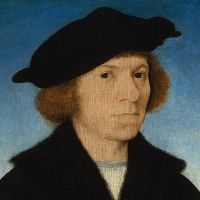 |
Joos van Cleve, 1485–1540. Netherlandish painter.
After working in Bruges, Joos moved to Antwerp, where he became Dean of the Guild of Painters. His style owes much to painters of an older generation, but he also seems to have absorbed some Italian influence. He is credited with being the first to include "world landscapes" in the backgrounds of his paintings.
|
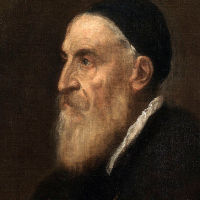 |
Tiziano Vecellio (Titian), 1485–1576. Venetian painter.
Arguably the greatest Venetian painter of the High Renaissance, he produced works in just about every genre over an exceptionally long career. Probably his greatest influence was in his handling of paint and use of color, which became a starting point for Rubens and others in the next century.
|
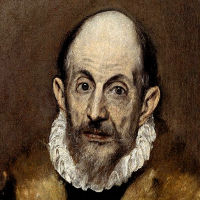 |
Domenikos Theotocopoulos (El Greco), 1541–1615. Greek painter working in Spain.
Born in Crete, El Greco studied in Venice, where he was especially influenced by Tintoretto. After living in Rome for some years, he moved to Toledo in 1577 and remained there the rest of his life. Although an immigrant, his elongated figures, bold contrasts of light, shade, and color, and turbulent skies were to prove signature elements of Spanish style.
|
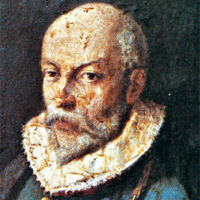 |
Tomas Luis de Victoria, 1548–1611. Spanish composer.
One of the leading composers of his time, Victoria studied in Rome (possibly with Palestrina) on a grant from King Philip II. He was also ordained as a priest. He returned in 1587 as chaplain to the King's sister, but also working as an organist and composer. He returned to Rome for two years in 1593, but died in Spain.
|
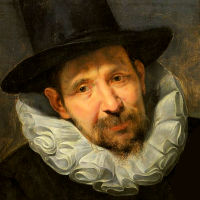 |
Jan Brueghel the Elder, 1568–1652. Flemish painter.
The son of Pieter Breughel, he specialized in animal, flower, and landscape motifs, sometimes collaborating on pictures with other artists such as Rubens, a practice continued by his son (Jan the Younger) after his death.
|
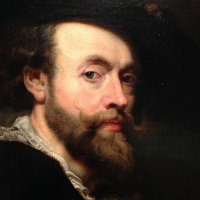 |
Peter Paul Rubens, 1577–1640. Flemish painter and diplomat.
One of the giants of baroque art, Rubens developed the style of Titian into a powerful rhetoric applied equally to sacred and profane subjects, and exerted enormous influence in Spain, England, and France as well as in his native Flanders, continued in the work of his many pupils. His position at so many courts also made him invaluable as a diplomat.
|
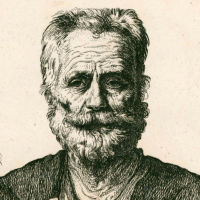 |
Jusepe de Ribera, 1591–1652. Spanish painter working in Italy.
As a young man, Ribera left his native Spain to study art in Rome, where he became one of the followers of Caravaggio. His dramatic compositions and bold contrasts of light and dark, whether applied to sacred or secular subjects, attracted buyers who took his works back to Spain almost as soon as he had painted them.
|
 |
Diego Velázquez, 1599–1660. Spanish painter.
Velázquez was the great master of the Spanish baroque, and with Rubens and Rembrandt, one of the giants of his century. He had been appointed court painter in 1624, at the age of only 25, with the exclusive right to paint the royal family. His historical, mythological, and genre scenes show an increasingly intricate imagination, especially as concerns the relationship of the painter to his work.
|
 |
Bartholomé Esteban Murillo, 1617–82. Spanish painter.
The leading artist in his native Seville, most of his works are of religious subjects, sometimes treated with strong dramatic sense, but more often appealing to popular piety—a quality shared by his genre paintings of beggar children that have a similar sentimental appeal.
|
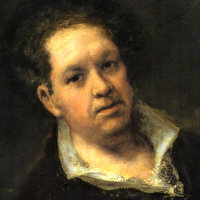 |
Francisco de Goya y Lucientes, 1746–1828. Spanish painter.
A slow developer, he began as a somewhat conventional Rococo painter and tapestry designer, but developed into an insightful portraitist, and—after going totally deaf in 1792—a savage social critic as a printmaker, and painter of some of the most terrible events of his time. His series of "black paintings" from the end of his life display a shattering visionary intensity.
|
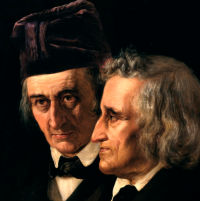 |
Jacob Grimm, 1785–1863. German folklorist.
With his brother Wilhelm (1786–1859), Jacob Grimm pursued a career as an academic philologist and cultural historian. Their seminal collection of folk tales, Children's and Household Tales (Kinder- und Hausmärchen), began publication in 1812. In 1838, the bothers began work on a definitive German dictionary, but we unable to complete it in their lifetimes.
|
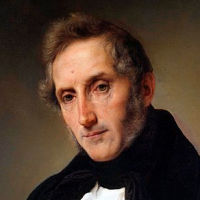 |
Alessandro Manzoni, 1785–1873. Italian poet, novelist, and philosopher.
Manzoni's 1827 novel I promessi sposi (The Betrothed) is hailed as one of the masterpieces of world literature, serving as an important symbol of the Risorgimento or unification movement. Manzoni was also important in stabilizing the Italian language in a time of change.
|
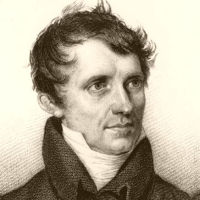 |
James Fenimore Cooper, 1789–1851. American novelist.
Cooper grew up in Cooperstown NY, a community founded by his father. After being expelled from Yale, he served first as a merchant seaman and then in the US Navy. The reputation of his large literary output, once much admired both at home and abroad, now rests mainly on his five Leatherstocking Tales, especially The Last of the Mohicans (1826).
|
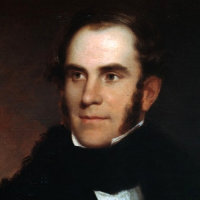 |
Thomas Cole, 1801–48. American painter, born in England.
A founder of the Hudson River School. Towards the end of his career, he turned to grand historical and allegorical themes, of which The Course of Empire was one.
|
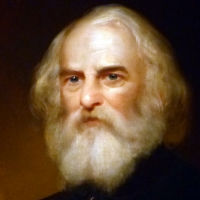 |
Henry Wadsworth Longfellow, 1807–82. American poet.
Longfellow was born in Maine, and taught at Bowdoin College and later at Harvard. His American themes and stirring diction made him the most popular poet of his day and earned him a reputation abroad. His Song of Hiawatha (1855) and similar poems employed the form of the Finnish Kalevala to create a similar Native American myth.
|
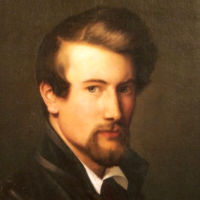 |
Adolph Tidemand, 1814–76. Norwegian painter.
A painter of the Norwegian Romantic school, Tidemand is best noted for the figures he included in landscaped by his friend Hans Gude, though he also painted numerous genre subjects of his own.
|
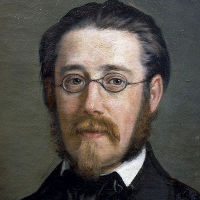 |
Bedrich Smetana, 1824–84. Czech composer.
Known as the "father of Czech music," his works Ma vlast (My Homeland) and The Bartered Bride most clearly exemplify the tide of Romantic Nationalism, but only a small portion of his works have entered the international repertoire.
|
 |
Hans Gude, 1825–1903. Norwegian painter.
Considered one of the leading exponents of Norwegian Romanticism, Gude specialized in somewhat optimistic landscapes of his country, often including figures executed by his friend Adolph Tidemand.
|
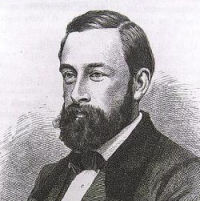 |
Albert Bierstadt, 1830–1902. American landscape painter.
Born in Germany, but living mainly in New York. Although a member of the Hudson River School, he became the painter par excellence of the American expansion to the Rockies and beyond.
|
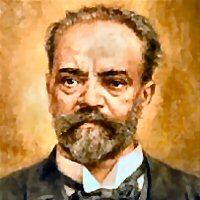 |
Antonin Dvorak, 1841–1904. Czech composer.
Dvorak composed ten operas, many of which have a continued presence in his native land. But only his fairy-tale opera Rusalka (1901), a variant on the Little Mermaid story, has had true international success, cropping up in an astonishing range of productions in the last few decades.
|
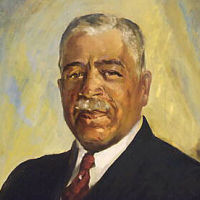 |
Harry Thacker Burleigh, 1866–1949. American singer and composer.
The grandson of slaves, Burleigh was awarded a scholarship at the National Conservatory of Music in New York in 1892. His singing of traditional spirituals came to the attention of the director, Antonin Dvorak, who incorporated similar material in many of his works. Burleigh himself gained national renown as a singer, composer, and arranger of Black music.
|
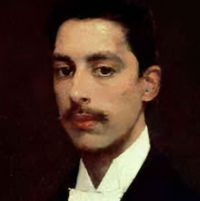 |
Enrique Granados, 1867–1916. Spanish composer.
Wikipedia divides his music into three periods: works with a general romantic flavor; works such as the Spanish Dances (1890) using traditional Spanish materials; and his opera Goyescas and other late works based on his fascination with the painter Goya.
|
 |
Joseph Stella, 1877–1946. Italian-American painter.
Born in the south of Italy, Stella came to New York to study medicine, but soon abandoned it for painting. However, it was not until he had returned to Europe in 1909 and encountered the Futurists and Cubists, that he formed his characteristically vigorous style, returning to America in 1913 and applying it to a variety of subects from city life.
|
 |
Fernand Léger, 1881–1955. French painter, sculptor, and filmmaker.
In his thirties, he developed a personal form of Cubism, using cylindrical forms in complex compositions. His experience and near-death in WW1 drew him to "the crudeness, variety, humor, and downright perfection of certain men around me, their precise sense of utilitarian reality and its application in the midst of the life-and-death drama we were in... [which] made me want to paint in slang with all its color and mobility."
|
 |
Umberto Boccioni, 1882–1916. Italian painter and sculptor.
Boccioni was a principal artist and leading theorist of the Futurist movement, founded in Milan in 1910. He based much of his visual language, in painting but especially in sculpture, on his experience of Cubism in Paris in 1911 and 1912. He was killed on active service in WW1.
|
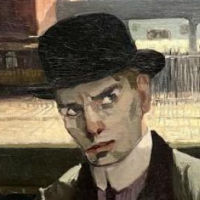 |
Stuart Davis, 1892–1964. American painter.
Beginning as a realist in the "Ashcan School" style, Davis was one of the youngest artists to exhibit at the Armory Show of 1913, which in turn exposed him to contemporary European art. The experience turned him into a committed Mosdernist. One of the first abstract painters in America, he made a reputation especially for his jazz-influenced work of his later years.
|
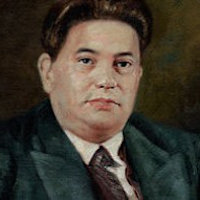 |
Darius Milhaud, 1892–1974. French composer.
A member of Les Six (with Satie, Poulenc, and others), Milhaud was a prolific composer in all media, noted for his early use of jazz and his experiments in polytonality and unusual instrumental combinations.
|




























































